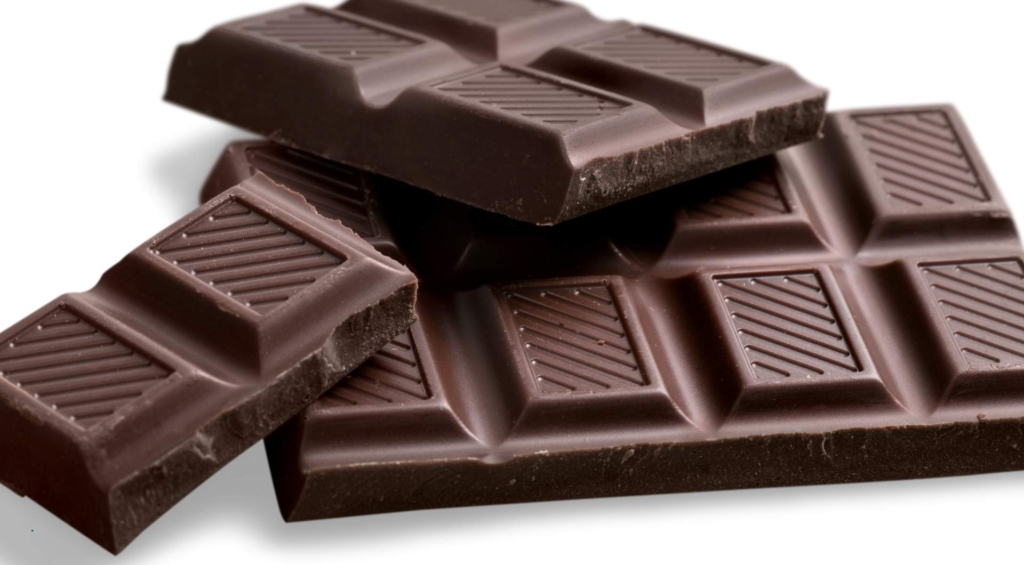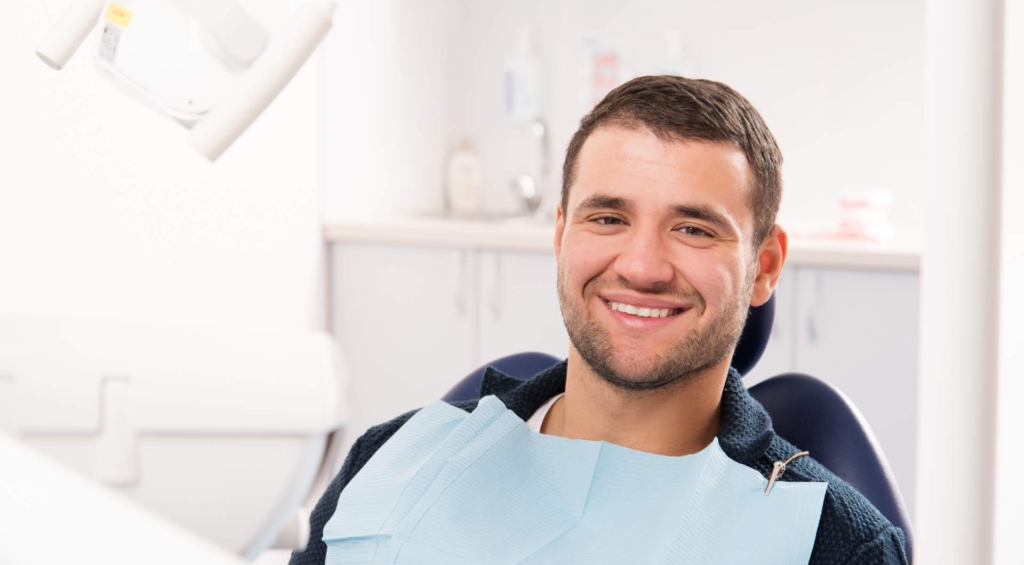Why Does Eating Chocolate Hurt My Teeth? The Truth Behind Chocolate and Tooth Pain
Ever bitten into your favorite chocolate bar, only to flinch from a sudden zing in your teeth? Whether it’s a recent issue or one that’s stuck around, eating chocolate—or any sweet—shouldn’t be painful.
We’re here to explain what can trigger chocolate-induced tooth pain and ways to stop it in its tracks. Read on to learn the top seven causes of chocolate-related tooth pain and six tips to enjoy it without the unpleasant discomfort.
Table of Contents
- Why Does Chocolate Hurt My Teeth? 7 Possible Reasons
- 6 Tips for Enjoying Eating Chocolate Pain-Free
- Don’t Ditch the Chocolate! Let Mint Dental Works Keep Your Teeth in Top Condition
Why Does Chocolate Hurt My Teeth? 7 Possible Reasons
#1: Enamel Erosion, Tooth Decay, or Cavities
Here are some of the ways chocolate might physically affect your teeth.
Enamel Erosion
Enamel erosion occurs when the lactic acid produced from eating chocolate damages the hard outer shell of your teeth. The acid attacks your enamel, causing it to weaken. This process, known as demineralization, causes tooth enamel to lose vital minerals, such as calcium and phosphate.
If you eat chocolate too often, the lactic acid created will continue to attack your enamel and prevent it from healing itself (remineralization). When the enamel erodes too much, it can cause sensitivity to chocolate and other sugars as well as hot and cold — think hot chocolate or chocolate ice cream.
Streptococcus mutans is a bacterium that feeds on sugar and lives in the plaque on our teeth. The plaque is a thin, sticky biofilm that coats these teeth. When you take a bite of chocolate, you introduce sugar to the environment, which gives the bacteria a source of food to gain energy and turn into lactic acid. This lactic acid production can lead to tooth decay, which damages your enamel.
Cavities
Cavities and tooth decay are often used interchangeably, but are, in fact, a cause and effect of each other.
Tooth decay erodes the surface of the teeth, and cavities happen when the enamel eventually breaks down. A cavity itself is a hole or a permanently damaged area in the tooth enamel. This can lead to discomfort caused by lactic acid interacting with dentin exposed by the cavity.

#2: Too Much Sugar
The primary factor contributing to the discomfort caused by chocolate is that it often contains excessive sugar.
Sugar is a major culprit in poor oral health. When it combines with bacteria to create lactic acid, it lowers the pH balance in our saliva, making it more acidic as well.
The more acidic your mouth is, the faster your enamel will erode. White and milk chocolate are the worst offenders as they contain a much higher sugar content than dark chocolate.
#3: Receding Gums
Receding gums are usually caused by periodontal disease — the infection and inflammation of the gums. When gums recede, they will often expose the roots of the teeth. The lower portion of teeth isn’t covered by enamel, and when exposed, it can cause discomfort from temperature changes as well as from sweet foods or drinks, like your favorite chocolate bar.
Practicing good oral hygiene and limiting the consumption of highly sugary drinks and foods can slow down or even prevent receding.
This is yet another reason to limit your chocolate consumption.
#4: Tooth Sensitivity
We might not think that the temperature of the chocolate we’re eating could cause our teeth to hurt, but in reality, it can. Chocolate is usually stored at room temperature or colder. Some chocolate lovers enjoy their sweet treat right out of the freezer. When you eat a piece of chocolate that’s colder than the warm temperature in your mouth, it can cause temporary sensitivity and sudden pain or discomfort.
The frozen or hot varieties of chocolate can sometimes even increase that temporary discomfort because teeth can be sensitive to both temperature and sweet sensations.
But not all chocolate is created equal! When it comes to oral health, dark chocolate is your best option for a sweet, indulgent treat. Because the darker varieties have a higher cocoa and lower sugar content, they are often considered less harmful to your teeth.
Try to limit the amount of milk or white chocolate you consume — these types usually have a much lower cocoa and higher sugar content.
#5: Grinding or Clenching
Teeth grinding (bruxism) involves repeatedly forcing your teeth together while moving your jaw. It can cause significant wear and tear on tooth enamel. The constant rubbing together of upper and lower teeth can weaken and thin out enamel or erode it completely, leaving the underlying dentin exposed. This exposure can be painful in itself. But if you eat chocolate when your dentin is exposed, it can travel through the tubules to the pulp and aggravate the nerve center.
If you know you grind your teeth or clench your jaw, we suggest wearing a mouthguard to protect your teeth and their enamel, so you can still enjoy some chocolate now and then.
#6: Recent Teeth Whitening
Teeth-whitening agents usually contain hydrogen peroxide or carbamide peroxide, which can penetrate the enamel to reach and remove stains. This process can cause your enamel to demineralize (weaken) and make it more porous. When porous, it can create passages for chocolate sugars to reach sensitive areas more easily.
You should avoid all chocolate for 24-48 hours after you’ve had your teeth whitened. Even though dark chocolate can be better for your overall oral health, it’s probably not a good idea to enjoy a bite immediately after a whitening procedure.
Dark chocolate has a lower sugar content than milk or white chocolate, but it still contains some sugar. Additionally, its high levels of cocoa contain tannins that can stain your enamel. Dark chocolate itself is also more acidic compared to other varieties. It’s best to avoid it until your enamel has hardened again.
#7: Cracked Teeth
Damaged teeth can have microscopic cracks or fractures in the enamel. These cracks can expose the dentin, allowing sweet substances — like chocolate — to trigger the nerve inside. These hairline fissures can also allow temperature-based chocolates easier access to the nerve, causing even more discomfort.
6 Tips for Enjoying Eating Chocolate Pain-Free
#1: Choose Your Chocolate Wisely
Choosing the right chocolate is essential for enjoying the treat pain-free. We recommend dark chocolate that’s low in sugar but high in cocoa. It’s best for your teeth to enjoy a 70% or higher cocoa treat.
Now for some good news! Several studies have been conducted on the benefits of dark chocolate to oral health. One study found that some of dark chocolate’s compounds can help prevent the growth of harmful bacteria and reduce plaque formation, preventing tooth decay. And another found that cocoa extracts can aid in remineralizing enamel and neutralizing acid in the mouth.
#2: Maintain Good Oral Hygiene
Taking proper care of your teeth is essential to both your oral and overall health. At Mint Dental Works, we recommend brushing your teeth with a soft-bristled brush and toothpaste twice a day. This can help remove plaque that contains cavity-producing bacteria and help strengthen enamel, both of which can reduce tooth sensitivity.
#3: Use Toothpaste for Sensitive Teeth
If you experience tooth pain often, we recommend using a toothpaste specifically for sensitive teeth (also called desensitizing toothpaste). These usually contain compounds that can block the dentine tubules over time, preventing the hot, cold, and sweet-based sensations from reaching the nerve. Some also contain enamel-strengthening properties.
However, remember that it’s not an instantaneous process. Relief is usually gradual when used consistently. It can take between two and four weeks to get the results you want.
#4: Rinse Your Mouth
Once you’ve savored that chocolate, give your teeth a quick rinse with water. This can significantly improve your oral health by washing away any leftover sugars before bacteria can metabolize them to create lactic acid.
Studies have shown that because water has a neutral pH, it can help to dilute and neutralize any existing acid in your mouth. It could be as effective as some prescription-strength mouthwashes. Rinsing with water effectively reduces the time acid comes into contact with your teeth.

#6: Visit Your Dentist Regularly
Even if you stick to dark chocolate and take good care of your teeth, issues can arise. Regular dental checkups enable your dental team to identify early signs of decay, perform thorough cleanings to remove hard-to-reach plaque and tartar, and apply sealants to protect your teeth from cavities.
Be sure to contact Mint Dental Works if you’re experiencing tooth sensitivity when eating chocolate. Our team will diagnose the cause and provide personalized treatments to alleviate the pain, allowing you to continue enjoying your chocolate treats.
Chocolate Lovers Welcome — Mint Dental Works Has Your Back!
Who says chocolate and healthy teeth can’t be friends? At Mint Dental Works, your SE Portland dentist, we’ll show you how to indulge your sweet tooth while keeping your smile happy. You don’t have to stop eating chocolate to maintain your oral health. You just need to do it the right way.
The content in this blog is not intended to be a substitute for professional medical advice, diagnosis, or treatment. Always seek the advice of your physician or other qualified health provider with any questions you may have regarding a medical condition.

